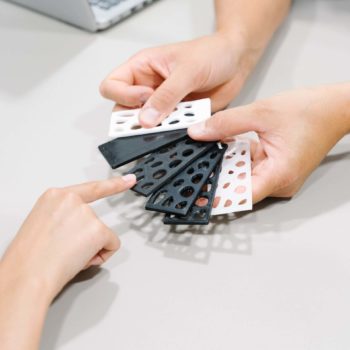 When it comes to product prototyping there is not a one-size-fits-all method. The best prototyping method for your specific product will ultimately depend on several factors, such as: product complexity, material selection and quantity required. Below we highlight product prototyping information help you become familiar with the options available.
When it comes to product prototyping there is not a one-size-fits-all method. The best prototyping method for your specific product will ultimately depend on several factors, such as: product complexity, material selection and quantity required. Below we highlight product prototyping information help you become familiar with the options available.
Five Popular Prototyping Methods
- CNC Machining. CNC machining is typically used to produce parts that require a high tolerance and/or using metal materials.
- Sheet Metal Manufacturing. Sheet metal manufacturing would be a good solution if the parts need to be made from metal and are a thinner and consistent wall thickness.
- Cast Urethane. Cast Urethane can be used to create cost effective molded parts. Materials are available in a variety of rigid materials that mimic tough plastic and flexible elastomers.
- Low Volume Injection Molding. Low Volume Injection Molding can be used when quantities exceed the cost effectiveness of other processes and require a slightly higher volume of parts.
- High Volume Injection Molding. High Volume Injection Molding is an alternative to these other processes if a high quantity of parts is required. Referred to as “Hard Tooling”, molds are made from metal and are more durable than soft tooling molds.
3D Printing a Prototype
For years, 3D printing has been synonymous with the prototyping phase of product development. 3D printing technology has rapidly advanced to include new methodology and materials, and is still widely used for product prototyping.
Complex geometries and quick turnaround are the two main reasons inventors and startups turn to this technology for prototyping. 3D printing technology has brought the product prototyping time frame down to mere hours compared to the weeks that this stage once took. A quick turnaround for your prototype means that you quickly print and test your idea. You are also able to print different iterations of your product before deciding on a final design.
As we have mentioned before, 3D printing isn’t a simple push button technology, your STL file needs to be optimized and error free for a successful print. If you do not have experience with CAD, it is extremely advantageous to work with a professional that can help create an optimized STL file and ultimately the best 3D print of your product.
A prototype is a tangible representation of your idea, and it is a necessary step in the product development process. It can be viewed as an experimental model of your idea that is then used to test or validate design and usability aspects of it. Prototypes can be fast and rough during the start of the product development process and become more formal with a functional prototype as you progress through product development.
If you have questions or need assistance with a prototype, please email us at info@3d-innovations.com
______
3D Innovations is a Product Development Company – from the 3D Design to a fully functional 3D Prototype & Product.

